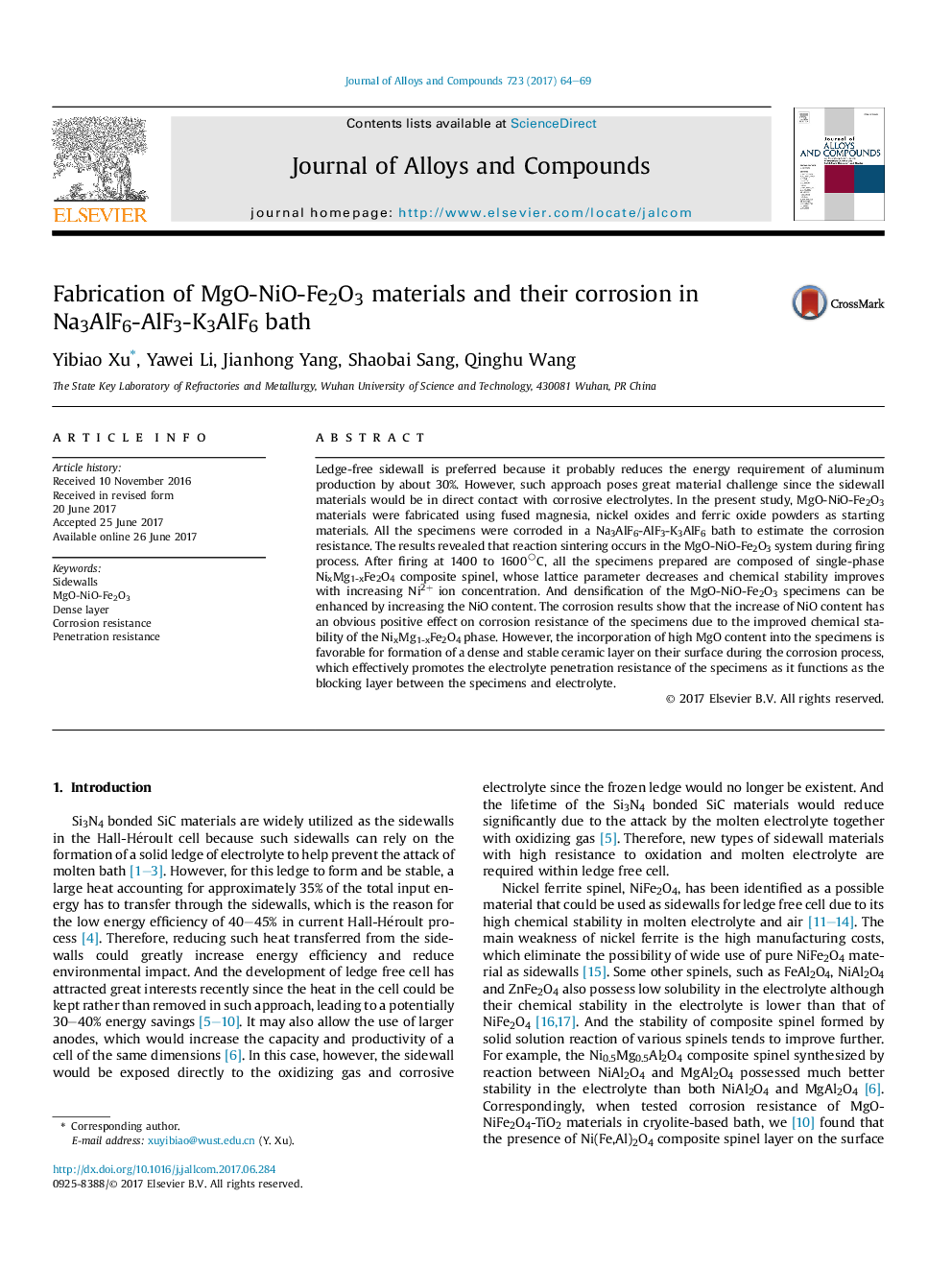| Article ID | Journal | Published Year | Pages | File Type |
|---|---|---|---|---|
| 5458679 | Journal of Alloys and Compounds | 2017 | 6 Pages |
Abstract
Ledge-free sidewall is preferred because it probably reduces the energy requirement of aluminum production by about 30%. However, such approach poses great material challenge since the sidewall materials would be in direct contact with corrosive electrolytes. In the present study, MgO-NiO-Fe2O3 materials were fabricated using fused magnesia, nickel oxides and ferric oxide powders as starting materials. All the specimens were corroded in a Na3AlF6-AlF3-K3AlF6 bath to estimate the corrosion resistance. The results revealed that reaction sintering occurs in the MgO-NiO-Fe2O3 system during firing process. After firing at 1400 to 1600âC, all the specimens prepared are composed of single-phase NixMg1-xFe2O4 composite spinel, whose lattice parameter decreases and chemical stability improves with increasing Ni2+ ion concentration. And densification of the MgO-NiO-Fe2O3 specimens can be enhanced by increasing the NiO content. The corrosion results show that the increase of NiO content has an obvious positive effect on corrosion resistance of the specimens due to the improved chemical stability of the NixMg1-xFe2O4 phase. However, the incorporation of high MgO content into the specimens is favorable for formation of a dense and stable ceramic layer on their surface during the corrosion process, which effectively promotes the electrolyte penetration resistance of the specimens as it functions as the blocking layer between the specimens and electrolyte.
Related Topics
Physical Sciences and Engineering
Materials Science
Metals and Alloys
Authors
Yibiao Xu, Yawei Li, Jianhong Yang, Shaobai Sang, Qinghu Wang,
